Where are the cheapest places to travel in South America? This can be a moving target because of economic conditions and exchange rates, but many of the countries are a perpetual good value.
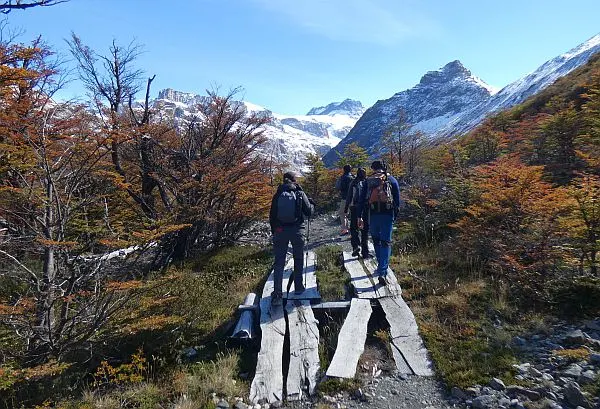
I spend a lot of time traveling in South America and the continent features prominently in two of my books. There’s a lot of overlap between countries covered in my living abroad book as well as The World’s Cheapest Destinations, currently in its 5th edition. It makes sense that destinations that are a compelling travel bargain are often a good value for expatriates as well.
I spent time in Argentina and Colombia recently, however, plus I’m in regular communication with people living in those countries as nomads or residents, so let’s start with those.
Cheap Travel in Argentina
Argentina might just be the best travel value in the world right now. It has been for a few years. Definitely the cheapest place to travel in South America for those who are not at the shoestring level and are looking for great value.
It’s cheaper than Mexico right now and presents a quality of food and drink that’s hard to top anywhere south of there. It’s not in first place for vegetarians and tea-totalers, but everyone else will have a smile on their face most of the time when pulling out their wallet.
Prices rise and fall with currency exchange rates and Argentina’s currency has been in freefall for quite a while. You have to bring cash to get the best rate, however, a rate that’s dramatically different from the official one you receive from a credit card or ATM withdrawal. The difference is not double like it was when I visited in 2022, but you still get a better rate for cash purchases where you’ve exchanged dollars or euros.
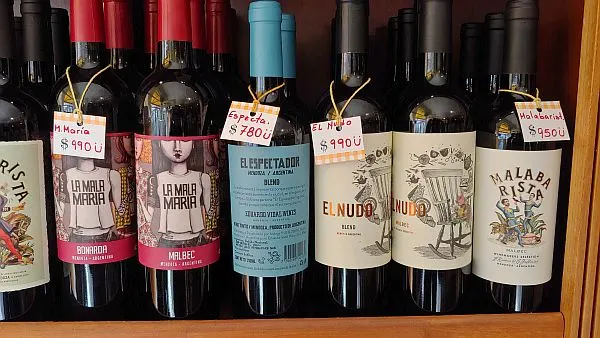
Back when $1 equaled around 200 pesos–at the start of 2024 it topped 1,000 to the $
I already did a full post on Argentina travel prices, and I update it regularly because things are so fluid, so go check that out to find out more about $1.50 craft beers, $2 bottles of wine, and $20 steak dinners for two that will leave you stuffed. Public transportation is good, the Airbnb rental scene is robust, and the country provides lots of fresh fruit and vegetables in an array of good restaurants.
I feel like we ate better during our three weeks in Argentina than we have in three weeks anywhere, mostly because we never had to worry about how much it was going to cost when we walked into a place.
Colombia is a Travel Bargain Still
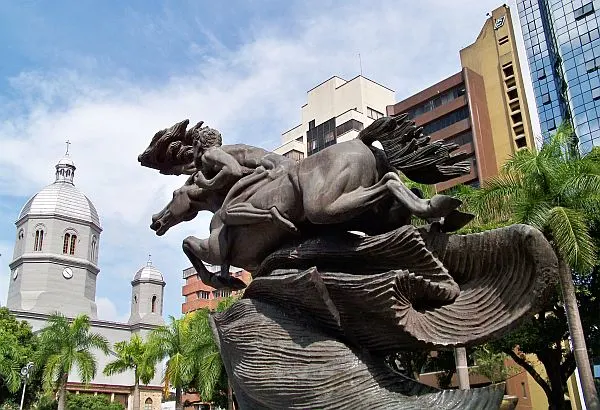
The first time I visited this country, back in 2008, it felt kind of expensive. The second time and third times it felt middle-of-the-road for Latin America. This last time I visited Colombia the prices were on par with the interior of Mexico, sometimes less.
Colombia’s currency hasn’t fallen off a cliff like Argentina’s, but the long and steady drop has left the U.S. dollar being worth a lot more there than it used to be. At this time in 2012, $1 got you around 1,800 Colombian pesos. In 2017 it had dropped to 3,000 to 1. As I write this in February of 2024, a buck may get you around 4,000 pesos. It has settled in at that level for a while now.
Sure, there’s been inflation, especially for imported goods, but anything produced in Colombia is going to be far cheaper than it used to be. That’s food & drink, nightlife, taxi rides, rentals, a shoeshine, museum admissions, and on and on. Apart from a few prices that are often set in dollars, like high-end hotels, the whole country should feel like it’s on sale.
I spent some time in Bogota and Medellin last time I was there and my rental apartment in the latter was $50 a night and really nice. I ate well and took the bargain subway a few times.
Brazil Was Once Expensive, Now it’s a Deal
I’m going to keep talking about exchange rates because they can make or break your budget depending on your timing. Brazil’s chart looks a lot like Colombia’s: in 2012 a buck got you two Brazilian reais (plural of real). When I wrote about travel prices in Rio in 2019 when I was there, it was around four to the dollar. Now a U.S. dollar gets you at least five reais most of the time.
Brazil botched its Covid response as badly as the USA did in the beginning, for the same reason: bad leadership that didn’t really believe the threat was real. The country had the second-highest death toll in the world behind the USA, well ahead of much more populated India. Now that we’re past that, travel is picking up, but it’s not at the same level it was in 2019.
Plus they’re about to sock you with a $160 visa fee to enter for Americans, about half that for Canadians in 2024. So this is going to dampen tourism more in the coming years: good if you’re willing to pay that to stick around for a while.
What are prices there like? If you pull up Numbeo and compare prices to your city, you’ll probably be pleasantly surprised. Here’s what I found when I compared Salvador to Tampa:
– Rent Prices in Salvador are 81.62% lower than in Tampa, FL
– Restaurant Prices in Salvador are 66.87% lower than in Tampa, FL
– Groceries Prices in Salvador are 54.93% lower than in Tampa, FL
To put that in real terms, you can get a draft beer or cappuccino for less than $2, a good meal of the day for $5.
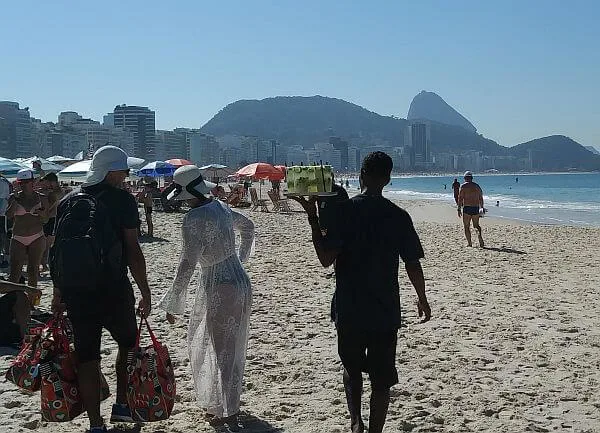
Although it’s sometimes hard to find cheap flights to Brazil, there are plenty of bargains for getting around once you’re there. The country has the most robust domestic airline system in South America, with heavy competition. (Just get travel insurance if you fly on GOL: they’re in bankruptcy protection now.)
If you’re thinking about sticking around for more than three months, Brazil has two things going for it. They’re launching a digital nomad visa, first of all, which would let you stay longer if you meet the income requirements. Just be advised you’ll be liable for local taxes if you stay more than half a year at a time.
If you’re pregnant, there’s another big advantage. If you give birth to your child in Brazil, not only is that kid an automatic resident, but the parents can get Brazilian passports too! See more on that here.
Peru is a Perennial Bargain – If You Do It Right
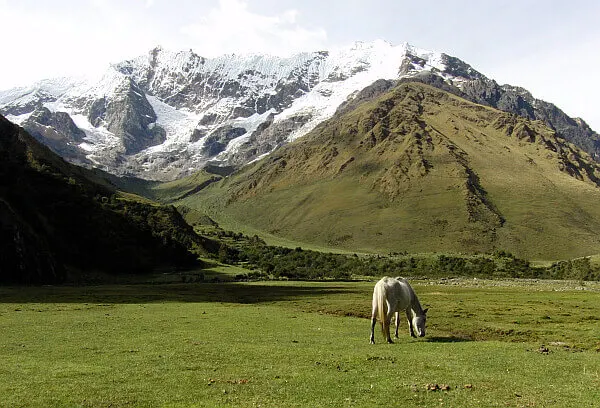
Peru is one of my favorite countries in the world and I’m losing track of how many times I’ve been there. As I wrote in this earlier post though, the country can seem expensive or crazy cheap depending on how and where you travel. Is Peru a cheap place to travel?
The quick rule of thumb is, go slow and go beyond the tour bus routes. If you’re in a hurry like the package tourists are, Peru will seem very expensive. If you chart your own path, it’ll feel like a great value. Just understand that a trip to Machu Picchu is going to cost you, especially if you try to go straight from Cusco and back.
If you get away from tourist zones, you can find a hearty meal of the day for $3 and it’ll take a few drinks for your bar tab to hit $10. Seasonal fruit and vegetables are often a dollar a kilo or less and you can find a private hotel room with good reviews for $20 to $25 in most locations.
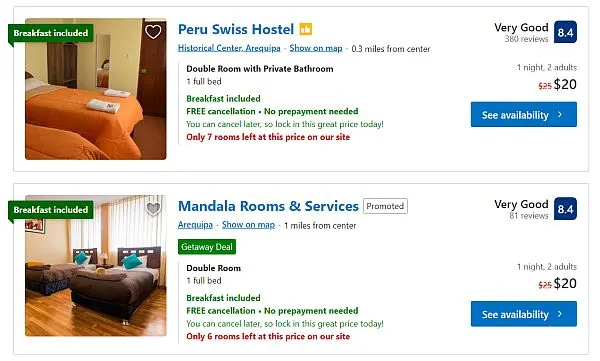
Although Peru’s most famous site was one of the poster children for overtourism before the pandemic, the crowds thinned out for a few years. Too late now if you missed that window though: they just raised the daily limit on visitors so the place is packed again. It’s a must-see, but then get away from that iconic site and it’ll probably feel like you have Arequipa, the Colca Canyon, Lake Titicaca, or Gocta Waterfall all to yourself.
There’s also been a fair bit of unrest in the country the past few years and as I write this in low season, protesters are blocking the train line to Machu Picchu, so allow extra time and don’t cut it too close. This kind of thing happens a lot in Peru and Bolivia.
Bolivia is the Cheapest Country Overall
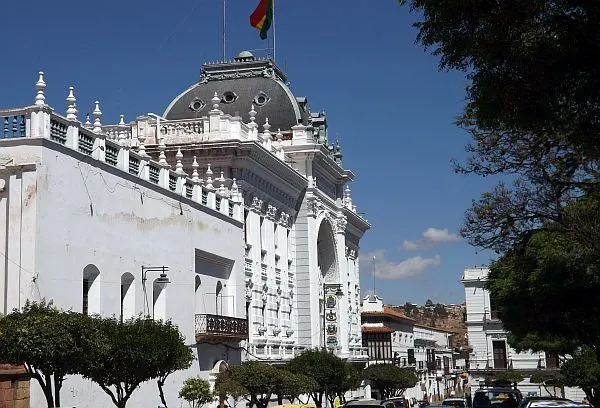
By any objective measure, Bolivia is at the top of the list for the cheapest places to travel in South America, but with one caveat: they’re the only country still charging you to enter in the first place (though Brazil is about to bring their visa charge back for some nations). If you’re American, you’ll need to pay a visa fee of $160 upon arrival, so just popping across Lake Titicaca for a few nights from Peru doesn’t make sense. Spread that out by staying for a while.
If you only head to Uyuni to go to the huge salt flats, it may not seem like such a bargain. That’s a tourist town, with prices to match. But the gateway city of Potosi is priced normally. Nicer is the city of Sucre, which you can reach by bus from Potosi or on a flight from La Paz. I’d go live in that adventure base town (pictured above) with no hesitation.
Few people get excited by La Paz and the altitude there is brutal if you’re arriving from sea level. It’s better to head elsewhere, especially if you can explore the Andes Mountain towns where the women are all dressed up in their traditional garb. If you go shopping for local handicrafts you’ll pay half what you would in the Sacred Valley of Peru and hearty meals are a bargain.
In an excerpt from my book, what you can get for a buck or less in Bolivia: a few days’ supply of coca leaves, a kilo of clean laundry, two empanadas, a few Bolivian chocolates, a pair of wool gloves, snacks for three from a street stall, a kilo and a half of bananas, ten bread rolls, two liters of bottled water, a liter of milk, a box of teabags, a few rounds of billiards, three local bus rides, 10 eggs, a basic set lunch, a fortune-telling session.
Mainland Ecuador for Budget Travelers
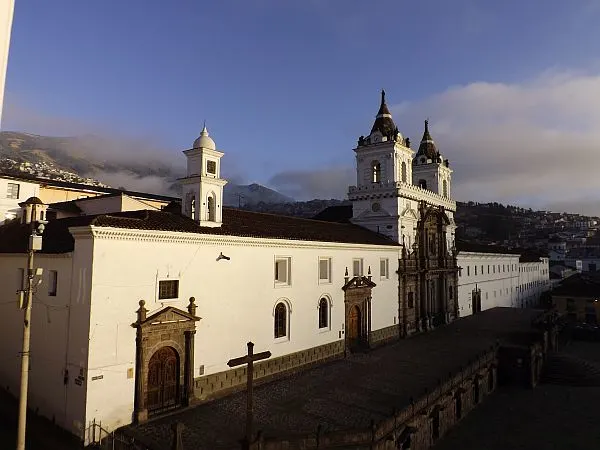
The big tourist draw for Ecuador is a collection of islands that are hours away by plane. That archipelago is not a budget destination though. The Galapagos should wait until you have a working stiff’s vacation budget or grandma is planning a big multi-generational trip.
Mainland Ecuador is a different story, however. Quito is one of the nicest big cities in Latin America, Cuenca has long been an expat retiree haven, and there are dozens of locations where you can get close to nature in the mountains. Ecuador’s beach locations are seasonal thanks to the way Pacific currents work, but since they’re relatively undiscovered by foreign visitors, prices are quite reasonable.
They use the U.S. dollar in Ecuador, so no currency exchange needed. You won’t need a lot of those dollars at lunch time either: I’ve often found set meals for $1.50 or $2 that had several courses. I’ve also found some of the cheapest dollar-denominated taxi rates: a couple of dollars for a ride in Cuenca or Quito. Buses are cheap, frequent, and ubiquitous. Local buses in Quito are a mere 25¢ and one out to neighboring towns will rarely top a dollar.
Check day tours from Cuenca here to get an idea of what those prices are like.
Have you visited one of the cheapest places to travel in South America in the past year? Tell us how it went!
This post on the cheapest places to travel in South America was updated in 2024.




Sharon T.
Monday 13th of June 2022
It's always curious to me that no one ever mentions Paramaribo, Suriname. I lived and worked there (building the US Embassy) and found it to be entirely charming and very affordable. Also, what countries would be recommended if one WERE to be looking to relocate on a "shoestring budget"?
Tim Leffel
Tuesday 14th of June 2022
I think it's because almost nobody goes to Suriname unless they're going there for work, plus there aren't many flight options from most places. Maybe the tourism board needs to invite some travel writers! I go into the living aspect in detail in my book A Better Life for Half the Price. Plenty of spots to choose from to live well for less.
James CREIGHTON
Tuesday 24th of May 2022
Hello Tim, I always enjoy reading your articles. Could I ask you elaborate on your comment "Ecuador’s beach locations are seasonal thanks to the way Pacific currents work" please? Thanks, James
James CREIGHTON
Sunday 5th of June 2022
@Tim Leffel, Thanks for your reply. I just read your latest post "The Best Budget Hotel Destinations: $15 or Less for 2". I really enjoyed it. James
Tim Leffel
Friday 27th of May 2022
There's a rainy season from January through April with high humidity but warmer water temperatures. The high season is roughly June through October when it's clear and dry, but the water temperatures drop a bit and average 75 degrees F. It's not the Caribbean or Mexico! Outside of high season, some hotels close and it gets quite sleepy.
Gipsy Dean
Friday 20th of May 2022
If you are Canadian no visa fee in Bolivia! Tim do a follow up to this and post the requirements for a retirement visa in these countries please. I've been to all these places except Brazil and Argentina is the clear winner!
Tim Leffel
Sunday 22nd of May 2022
Yes, it's a reciprocal visa charge, which Argentina, Chile, and Brazil eventually dropped because it was killing their tourism numbers from the most free-spending tourists. Bolivia doesn't get many though, so it would rather make a point on principle. If your country charges them less, they will charge you less than $160.